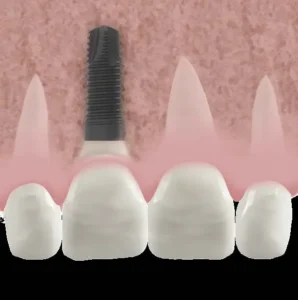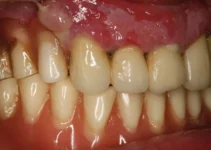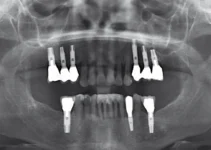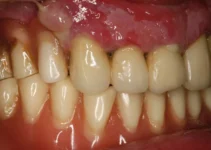A dental crown is a custom-made cap that is placed over a tooth to restore its shape, size, strength, and enhance its appearance. Crowns are commonly recommended for teeth that have been weakened by decay, cracks, or excessive wear. They can also serve an aesthetic purpose by improving the appearance of discolored or misshapen teeth. Typically, you might need a dental crown after a large filling compromises the integrity of your tooth, or following root canal therapy to protect the restored tooth. Crowns can be made from various materials, including porcelain, ceramic, and metal, and are designed to blend seamlessly with your natural teeth, ensuring long-lasting and natural-looking results.
Introduction to Dental Crowns
Dental crowns are a common solution in restorative dentistry, used to protect, cover, and restore the shape of your teeth when fillings don’t solve the problem. These crowns can be made from a variety of materials and are crucial for maintaining dental health following procedures like root canals or after significant tooth decay. In this introduction, we will delve into what dental crowns are, the materials they are made from, and how they are crafted to ensure optimal functionality and aesthetics.
Understanding dental crowns involves knowing their definition, the diverse materials used in their fabrication, and the meticulous process involved in their creation. Below, we will break down each of these aspects to provide a comprehensive overview of dental crowns and their importance in modern dentistry.
Definition of a Dental Crown
A dental crown, often referred to as a “cap,” is a tooth-shaped cover placed over a tooth to restore its shape, size, strength, and appearance. Crowns are cemented into place, covering the visible portion of a tooth at and above the gum line. Essentially, a crown serves as a protective shell that enhances the durability and functionality of the compromised tooth.
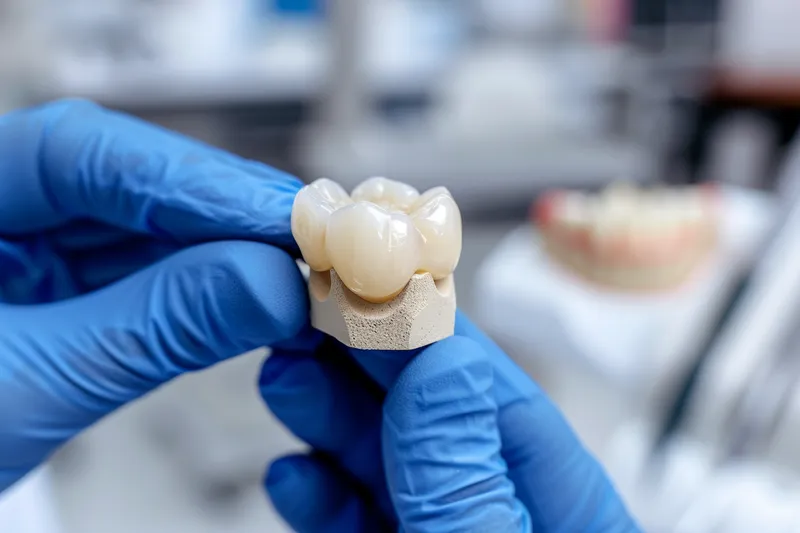
Crowns are typically used in cases where a filling is not sufficient to repair the tooth. This includes situations with extensive decay, weakened tooth structure, cracked or broken teeth, or post-root canal treatment. They are also used to replace missing teeth in conjunction with dental implants and bridges.
Materials Used in Dental Crowns
Dental crowns can be made from several materials, each with its advantages and disadvantages. The choice of material depends on various factors, including the location of the tooth, the patient’s bite, and aesthetic considerations. Common materials include:
- Porcelain-fused-to-metal (PFM): These crowns are made from a metal base with porcelain baked onto the surface, offering a balance between strength and aesthetics.
- All-ceramic or all-porcelain: These crowns provide the best natural color match and are ideal for patients with metal allergies. They are, however, less durable than PFM or metal crowns.
- Gold alloys: Crowns made from gold are highly durable and resistant to wear, making them an excellent choice for back teeth where the forces from chewing are greatest.
- Base metal alloys: These crowns are very strong and corrosion-resistant, often used for patients who need a durable solution.
How Dental Crowns Are Made
The process of creating a dental crown involves several steps to ensure a perfect fit and natural appearance. Initially, the dentist prepares the tooth by removing any decay and shaping it to fit the crown. An impression of the tooth and surrounding teeth is then taken, providing a model for the crown’s creation.
This impression is sent to a dental lab where skilled technicians craft the crown. They use the material chosen by the dentist and patient, ensuring it matches the natural color and shape of the teeth. The crown is then tested for fit and bite before being permanently cemented onto the tooth.
The precise creation and fitting process ensures that the dental crown not only restores function but also blends seamlessly with the natural teeth, providing a lasting and aesthetically pleasing solution.
If you’re interested in learning more about dental restorations, be sure to read our other articles on dental implants, bridges, and advanced restorative techniques.
Signs You Need a Dental Crown
Dental crowns are a common solution for addressing various dental issues. Recognizing the signs you might need a dental crown is essential for maintaining oral health and preventing further dental problems. Here are some crucial indicators to consider. Persistent pain or discomfort in a tooth can often signal the need for a crown. This pain may occur during activities such as chewing or biting, indicating that the tooth structure is compromised and might require reinforcement. Additionally, teeth that are significantly worn down due to grinding or other factors may require crowns to restore their natural function and appearance.
Another sign is a tooth that has undergone a large filling or previous dental procedure. When a significant portion of a tooth has been filled, the remaining structure may be too weak to function correctly and could benefit from the added strength provided by a crown. Lastly, teeth that are cracked or fractured often require crowns to prevent further damage and restore their structural integrity.
Common Dental Issues Addressed by Crowns
Dental crowns are versatile and can be used to address a range of dental issues. One primary use of crowns is to protect a weak or decayed tooth from breaking. When a tooth is severely damaged or decayed, a crown can cover and protect it, preventing further deterioration. This not only preserves the tooth but also maintains the overall health of the mouth.
Crowns are also commonly used to restore an already broken tooth or a tooth that has been worn down. The restorative properties of crowns ensure that the tooth regains its natural shape, size, and function. This is particularly important for molars, which endure significant pressure from chewing.
Additionally, crowns can be used to hold a dental bridge in place. A bridge is often required when one or more teeth are missing, and crowns on the adjacent teeth provide the necessary support to keep the bridge secure. This restores the patient’s ability to chew and speak properly and maintains the alignment of the remaining teeth.
Lastly, crowns play a crucial role in covering severely discolored or misshaped teeth. While more cosmetic in nature, this use of crowns can significantly improve the appearance of a patient’s smile, providing both aesthetic and psychological benefits.
Understanding the signs and common uses of dental crowns can help you decide on the best treatment options for your dental health. For more in-depth information on related topics, consider exploring our other articles on implantology and bone regeneration.
Benefits of Dental Crowns
Dental crowns are a popular and effective restorative treatment that offer numerous benefits for patients with damaged or decayed teeth. Crowns are custom-made to fit over the entire tooth, providing a protective and aesthetic solution. In this article, we will explore the primary benefits of dental crowns, including the restoration of tooth functionality, aesthetic improvements, and their longevity and durability.
Understanding the advantages of dental crowns can help patients make informed decisions about their dental health. By restoring the structure and appearance of natural teeth, crowns can significantly improve oral health and overall well-being. Let’s delve into the specific benefits of dental crowns in more detail.
Restoration of Tooth Functionality
One of the most significant benefits of dental crowns is the restoration of tooth functionality. When a tooth is severely decayed, cracked, or damaged, it can lose its ability to function properly for chewing and speaking. A dental crown provides a strong and durable solution that restores the tooth’s ability to withstand normal biting and chewing forces.
This is especially crucial for molars, which are subjected to significant pressure during eating. By covering the entire tooth, a crown helps to distribute forces evenly, reducing the risk of further damage or fractures. Additionally, crowns can protect weakened teeth from additional decay and wear.
For patients who have undergone root canal therapy, dental crowns play a vital role in reinforcing the tooth structure. Since root-canal-treated teeth are more fragile, a crown can provide the necessary strength and stability to prevent breakage and extend the life of the tooth.
Aesthetic Improvements
Aesthetics is a key consideration for many patients seeking dental treatments, and crowns offer significant aesthetic improvements. Dental crowns can be made from a variety of materials, including porcelain, ceramic, and zirconia, which closely mimic the appearance of natural teeth. These materials are chosen for their ability to blend seamlessly with the patient’s remaining teeth, creating a natural and harmonious smile.
Crowns are especially beneficial for teeth that are discolored or misshapen. By covering these imperfections, crowns can enhance the overall appearance of the teeth and boost the patient’s self-confidence. Modern dental technology allows for precise color matching and customization, ensuring that the crowns look indistinguishable from adjacent natural teeth. Additionally, crowns can be used in cosmetic dentistry to address a variety of aesthetic concerns, such as gaps between teeth, minor alignment issues, and uneven tooth sizes. By providing a uniform and attractive appearance, crowns contribute to a more aesthetically pleasing smile.
Longevity and Durability
Dental crowns are renowned for their longevity and durability. With proper care and maintenance, crowns can last for many years, often a decade or longer. The materials used for crowns, such as porcelain-fused-to-metal or all-ceramic options, are selected for their strength and resistance to wear and tear.
Several factors contribute to the longevity of dental crowns, including:
- High-quality materials
- Proper oral hygiene
- Regular dental check-ups
- Avoiding habits like teeth grinding or biting on hard objects
Unlike fillings or other temporary restorations, crowns provide a long-term solution that can withstand the pressures of daily use. This makes them an excellent investment in maintaining oral health and preserving the functionality of natural teeth.
By choosing dental crowns, patients can enjoy lasting benefits that improve both their oral health and overall quality of life. For more information on dental treatments and to explore other restorative options, be sure to read more of our informative articles.
Frequently Asked Questions About Dental Crowns
Here are some common inquiries about the purpose and necessity of dental crowns, ensuring you understand when they might be needed in dental care.
What is a dental crown and when is it necessary?
A dental crown is a cap placed over a tooth to restore its shape, size, strength, and improve its appearance. Crowns are necessary when a tooth is significantly damaged or decayed, after a root canal treatment, to cover a dental implant, or when a tooth is cracked or weakened. They help in protecting, covering, and restoring the structural integrity of the wearing teeth.

My name is Salman Kapa, a 73-year-old expert in bone regeneration and dental implantology. With decades of experience in the field, I am dedicated to advancing our understanding of oral health and hygiene. Through my research and writing, I aim to contribute to the development of innovative solutions in dental care.

